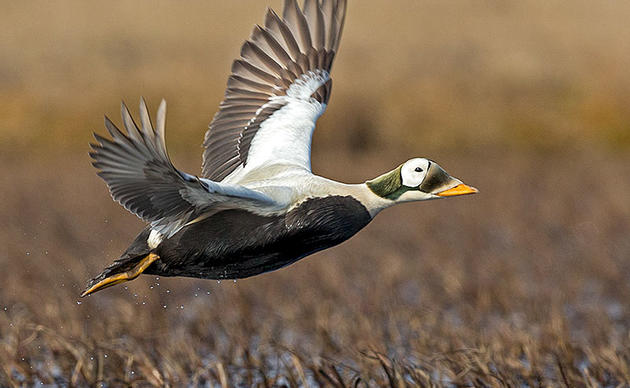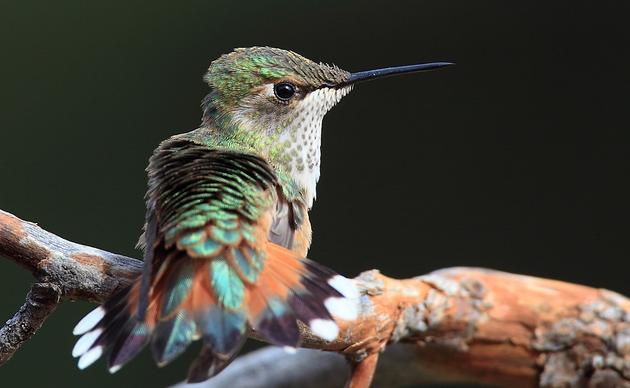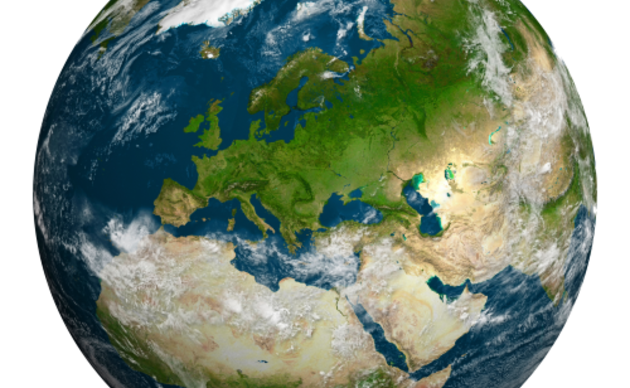Harsh. Barren. Unforgiving. These descriptors may come to mind when you think of the Arctic. But the reality is that the Arctic is exploding with life, and with that diversity comes an ecosystem rich in sound.
Like many other aspects of the Arctic, its soundscape is one-of-a-kind. On land, caribou and bird populations rely on sound to migrate, find mates, and define territory. Beneath the icy waters of the Arctic Ocean, symphonies of acoustics erupt from bowhead whales, walruses, and belugas, a cacophony amplified by sea ice coverage. For some species, sound is synonymous with survival.
Though the Arctic’s pristine acoustic environments are vital ecological resources, their importance is often overlooked—or rather, underheard—as natural soundscapes become increasingly threatened. Melting ice sheets, human activity, and recent policy decisions are drowning out the natural soundscapes, leaving them more vulnerable to unwanted noise.
But not all hope is lost. Scientists are working to understand these complex acoustic landscapes. Soundscape ecology, despite its relative newness, has produced breakthroughs in marine mammal migration and bird communication, as well as important regulations regarding anthropogenic and mechanical noise. With every hydrophone deployed and acoustic monitoring system installed, we gain deeper insight into the world of bioacoustics.
If you’re interested in listening to some of Earth’s most fascinating communicators, exploring the science of sound, and understanding how human action is impacting Arctic soundscapes, you’re in the right place.

A Beginner’s Guide To Soundscapes
A soundscape is all the sounds present in an environment and how the landscape transmits them. Within this acoustic environment, sounds fall into one of three categories: biophony, geophony, or anthrophony. Biophony refers to sounds produced by living organisms, such as the shrill whistling of a Bald Eagle, while geophony pertains to the sounds of the Earth and atmosphere, including wind ripping through the tundra or glaciers calving. Anthrophony encompasses all human activity—whether that be chatter at a cafe, noise from a construction site, or the roar of a jet plane.
So who are the major players in the Arctic soundscape?
In terms of marine biophony, the ocean is teeming with acoustics year-round. During summer and fall, the soundscape is dominated by bowhead whales and belugas, who accompany the year-round ice seal residents. Come winter, the conversation quiets, with only ringed, bearded, and spotted seals remaining in the Arctic. In the spring, seasonal migrants, such as Pacific walruses, bowheads, and belugas, return to Arctic waters.
“You may look out at the sea ice and think there’s nothing there … But once you put a hydrophone … down, it’s chaos in the spring,” says Kate Stafford, a bioacoustician at Oregon State’s Marine Mammal Institute. But no matter the season, there is constant communication beneath the surface.
Biophony on the Arctic plain is also highly variable. The tundra explodes with sound as migratory birds and caribou discuss respective migration routes, settle territory disputes, and warn about threats. Sound levels vary temporally; during mating season, birds are more likely to advertise themselves vocally, then quiet down once they’re paired up.
Geophony also changes with the seasons. Sea ice, waves, and wind all add to the uniqueness of the soundscape, but their contributions vary depending on the time of year. Anthrophony has become increasingly prominent in the Arctic. Commercial shipping barges, as well as smaller vessels, interrupt the marine soundscape, while oil and gas extraction influence the acoustics of the Arctic tundra. During winter, acoustic recorders often pick up the whirrs of passing snowmobiles.
Each voice contributes to the sonic landscape, creating a chaotic harmony as vocalizations are amplified, echoed, or muted. Although no two soundscapes are ever identical, the Arctic’s is especially unique, imprinting its acoustic fingerprint onto the icy tundra and frozen seas.
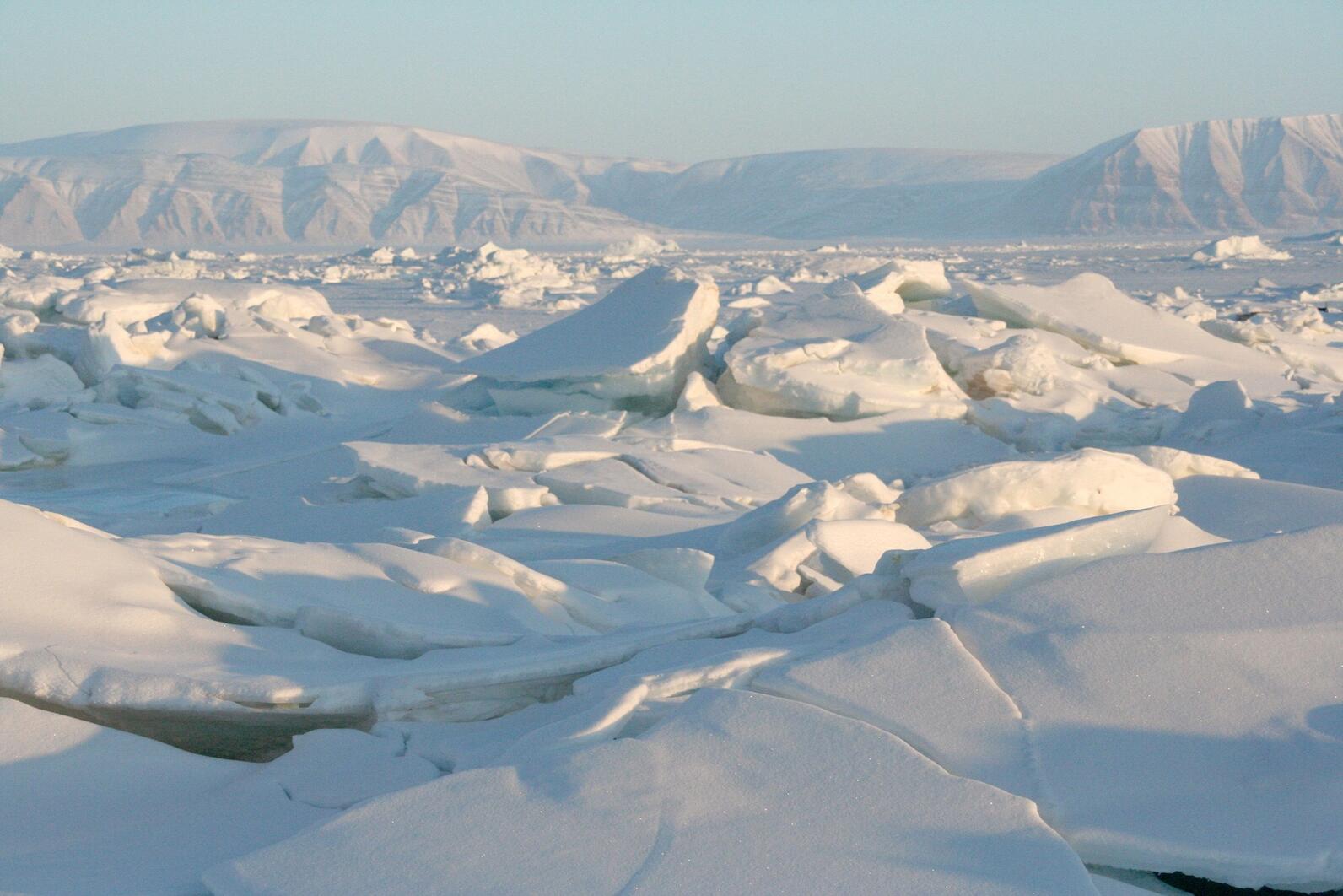
A Soundscape Like No Other
In a land known for its rugged and inhospitable environment, how does the soundscape burst with such richness?
The answer lies in the millions of square miles of sea ice covering the frigid ocean waters. Depending on the season, these ice sheets either silence or generate noise, creating an acoustic environment found nowhere else on the planet.
During subzero winters, ice acts as a lid, sealing off the ocean from external wind and ship noise. This phenomenon creates some of the lowest ambient noise levels on Earth, allowing marine mammal vocalizations to dominate the soundscape.
The hush that falls over the Arctic is interrupted come springtime. As warming temperatures fracture ice sheets, “it produces creaks and cracks and groans and pops, and it is incredibly noisy and incredibly variable,” Stafford says. These melodies harmonize with the ongoing marine mammal chorus, intertwining to create a unique spring symphony.
“Sometimes you’ll look at a spectrogram and listen to it, and the ice almost sounds like animals. And certainly, bowheads and beluga whales sometimes sound like ice,” Stafford says. “The animals that have evolved to live in the Arctic are exposed … seasonally [to] really high levels of sound that overlap the signals they make.”
Listen here to the chaos of springtime acoustic signaling, recorded off the coast of Utqiaġvik, Alaska.
The Arctic tundra creates an equally unique setting to broadcast sound. North of the Brooks Range, the landscape is flat and open, characterized by low-growing shrubs, lichens, and grasses. This vastness sets the stage for a dynamic soundscape. Vocalizations travel far on the expansive landscape. However, the lack of physical barriers also allows strong winds to whip through the tundra undeterred, masking certain acoustic signals.
Wildlife ecologist Todd Brinkman notes the Arctic’s extreme seasonality as another aspect contributing to a distinct soundscape. “You have this influx of a massive number of migratory bird species that come in for the breeding grounds. You have the four different caribou herds using it as their calving grounds,” Brinkman says. “The place just explodes in life for this kind of short, intense season, and then everything goes kind of dormant and quiet for a while during those cold, frozen months.”
From ice-covered seas to thawing tundra, the Arctic is always alive with sound, a vital component to survival in extreme conditions.
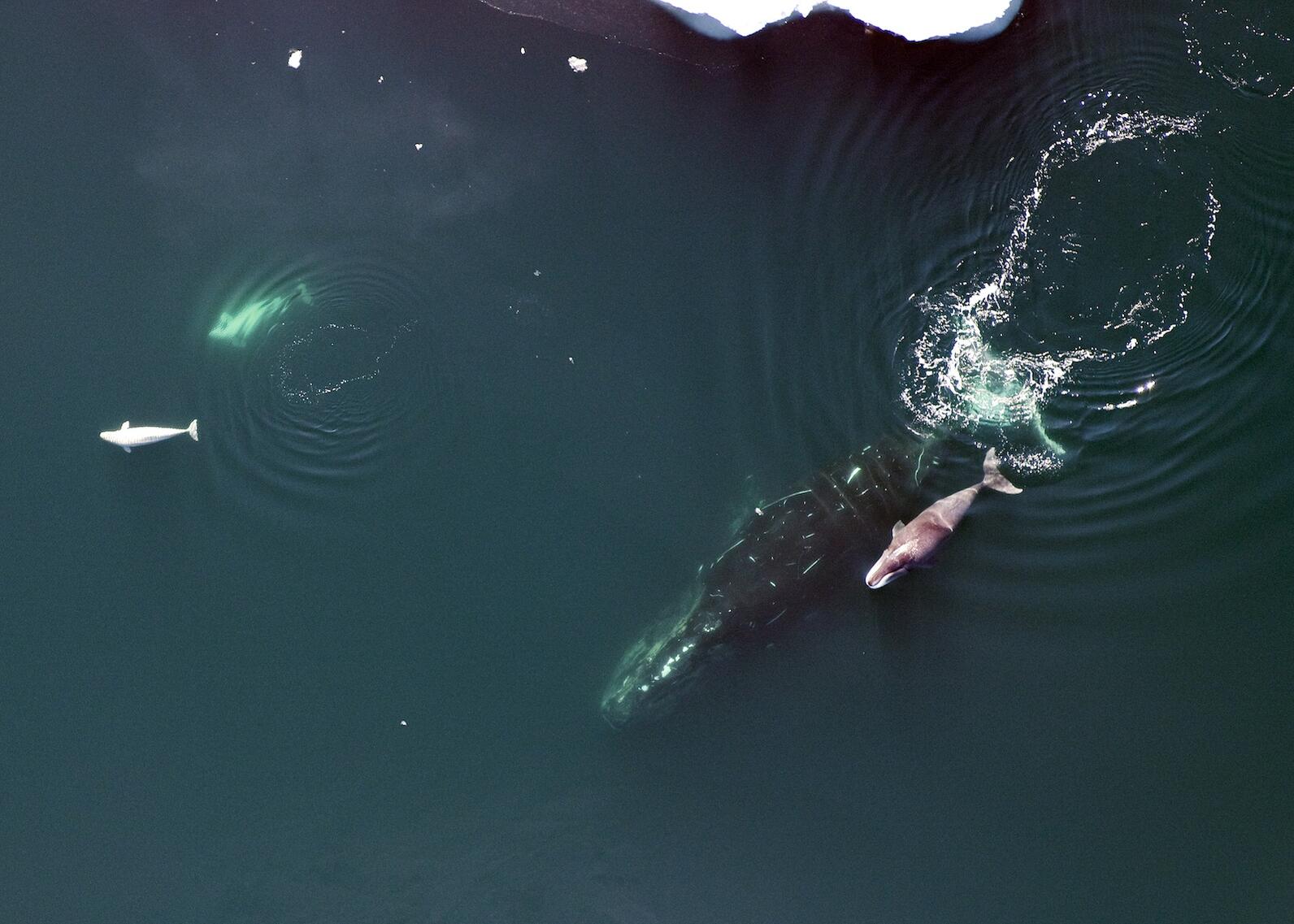
Sound As A Lifeline
The phrase “a deaf whale is a dead whale” may seem like overkill, but for marine mammals, sound is their way of seeing.
“If you live underwater, where light doesn't transmit very far, and smells don’t either, and you’re not really terribly tactile, sound is the sense you have to use, right?” Stafford says. In the ocean, sound is essential for animals to communicate about food, territory, reproduction, migration, and danger.
This reliance on sound contributes to some pretty impressive acoustic displays.
Bowhead whales are the stars of the show. While they populate the soundscape with simple moans, groans, and whoops year-round, their most impressive performance occurs during breeding season. Males produce intricate, complex songs that change often. What’s even more impressive is that the whales aren’t imitating one another; dozens of uniquely composed songs appear each winter. And on top of these showstopping performances, bowhead whales wield their acoustic abilities to search for areas of sea ice that are thin enough to break and breathe through.
Listen here to bowhead whale vocalization.
If bowheads are the superstars of the marine soundscape, gray whales are the Olympic athletes. Their long-distance migrations can cover up to 14,000 miles, from Baja California, Mexico, to the Chukchi Sea in the Arctic and back. Sound plays an essential role in these journeys.
“To figure out where they are, they don’t have cell phones or inReaches [a type of satellite phone] or anything like that,” says Ben Sullender, Audubon Alaska’s Director of Geospatial Science. “They rely on noise as a way to orient themselves and keep that social structure, which is so important during these really complex, massive, long-distance migrations.”
Listen here to gray whale vocalization.
Sound is equally important for terrestrial species, specifically the migratory birds and caribou that call the Arctic home for a few fleeting months each year. In the Arctic Coastal Plain, birds contribute greatly to biophony. And they have an expansive vocal repertoire. Calls vary between species, with individuals producing contact calls, breeding displays, and even alarm calls. Lapland Longspurs, for example, are known to produce calls that can travel up to one kilometer.
What’s more, some of these calls aid in interspecific communication, dictating the movement patterns of caribou and other species of birds. A 2022 study showed that early-migrating birds seek out snow-free patches of prime habitat, and their calls provide important navigational information for migratory birds and caribou later seeking out these areas.
Although following bird calls gets them to the finish line, caribou first must endure a marathon migration, which requires their own special acoustic signaling. Caribou have a sesamoid bone located near their ankles. When they run or walk, this bone repeatedly clicks. The leading theory is that this clicking noise allows caribou to follow one another even in the darkness of the Arctic night.
“If visible light isn’t present, or if it’s foggy, or if there’s blizzard conditions, they can still hear each other to stay together,” Brinkman says. “So even these animals that you don’t really think of as noisy, they, of course, are using sound in a lot of different ways.”
All of these sounds, from the bowhead whales’ profound serenades to the inconspicuous clicks of migrating caribou, contribute to the uniqueness of the Arctic acoustic landscape. But the ruckus of climate change and human development is increasing in volume, threatening to drown out these pristine and crucial natural soundscapes.

When Sound Becomes Noise
It’s no secret that the Arctic is warming, but if you want cold, hard facts, it is warming four times faster than anywhere else on the planet. Amongst multitudes of environmental concerns, Arctic amplification is melting seasonal sea ice, and fast—12.2% of the total ice area is lost each decade. Sea ice acts as a buffer, preserving a pristine oceanic soundscape devoid of wind, wave, and vessel noise. As the ice continues to melt earlier in the season, the marine soundscape is becoming increasingly vulnerable to an influx of geophony and anthrophony. Wind speed is directly linked to higher ambient noise levels. As the Arctic Ocean opens up, wind is an unwelcome voice in the chorus of marine mammal vocalizations.
“It’s kind of like static,” says acoustic ecologist Morgan Ziegenhorn. “Imagine you’ve tuned into a radio station, and you’re getting far away, and suddenly there’s a lot of static. You can’t pinpoint a single noise source.” Though not aggressively disruptive, wind poses significant challenges for marine life, making it more difficult for species to pick up specific contact calls.
Other sounds aren’t as subtle. Ship noise poses a problem to marine mammals, especially cetaceans and pinnipeds that vocalize at the same frequency as the deep, loud rumblings produced by vessels. Bowheads, belugas, seals, and walruses all share vocalization frequencies with ships, a troubling overlap.
Unfortunately, an ice-free Arctic Ocean is music to the ears of shipping companies hoping to get vessels through the Chukchi and Beaufort seas. A 2021 Arctic Council report detailed troubling statistics: from 2013 to 2019, the amount of underwater noise in the Arctic doubled. In comparison, other regions across the globe took between 30 and 40 years to reach this increase. In that same period, the number of vessels increased by 25%, reaching 1,628 ships by 2019. And since commercial shipping is a fairly new addition to the Arctic soundscape, many marine mammals react intensely to the rapidly increasing levels of noise.
The impacts of ship noise cannot be understated. A study conducted in Glacier Bay National Park showed that whales can typically hear and respond to one another’s vocalizations over 1.5 miles. When ship noise is introduced into the equation, this distance decreases to just 75 yards. Furthermore, a study produced by Oregon State University revealed that whales reduced vocalizations when vessel noise was present.
“It’s energetically costly to scream all the time,” Ziegenhorn says.
Ship noise is kind of like living near a highway; the noise isn’t earshattering, but it’s constant. In response, whales typically quiet down or vacate the area. Belugas, for example, may flee when vessels come within 50 kilometers. The most pressing challenge occurs in narrow bottlenecks such as the Bering Strait. The strait serves as the only connector between the Pacific and the Arctic, making it a critical area both for whale migration and shipping.
“If you have an enormous amount of cargo traffic or liquid natural gas tankers just buzzing back and forth in this really restricted, 40-mile-wide stretch of water … you have to get through it, but you might not want to, because it’s so noisy,” Sullender says. “The other option would be that these whales just grit their teeth and go through it, and they might suffer some hearing loss.”
It’s a lose-lose situation for the whales: either endure the noise and risk the loss of their most vital sense, in addition to a slew of other negatives, or attempt a futile reroute of their migration.
Seismic air guns, used for surveying the sea floor, emit devastatingly loud blasts that penetrate the ocean’s subsurface to look for natural resource deposits. But the noise levels from these metallic giants are known to cause behavioral changes and permanent hearing damage for marine mammals.
“It doesn’t mean we’re going to have a bunch of dead bowheads on the beach,” Stafford says. “But it means that if you stop calling and you’ve got a calf nearby, can you maintain contact with that calf? Or if you’re migrating as a population, do you know what direction to go if you’re essentially blind? … Anything that raises ambient noise levels, and therefore kind of decreases the range over which they can communicate, can be really detrimental.”
The Arctic tundra is facing a different, yet equally disruptive, threat to its soundscapes.
“We anticipated in the Arctic [National] Wildlife Refuge, which is really just a remote, roadless, relatively inaccessible area, that it would be pretty free of human sound,” Brinkman says. “But what we found is there was still quite a bit of anthrophony in the Refuge. And the reason is that aircraft are everywhere.”
Alaska is often a state connected by air or boat, not land. In fact, 82% of Alaska’s communities are inaccessible by road. This places the bulk of transportation on air travel, and the average throughout the state is two to five aircraft events per day.
Aircraft is the number one source of anthrophony in the Arctic Coastal Plain (ACP), a critical habitat for nesting American Golden-Plovers, feeding Snow Geese, and more than 70 other bird species. Other human-operated machinery, such as drilling rigs, construction, and vehicles, adds to the ruckus.
Again, a 2022 study in the Arctic Coastal Plain showed that anthrophony causes significant changes in bird distribution. Biophony is a key indicator of habitat suitability. When the calls of vocal species are masked, other migrants may avoid patches of optimal habitat, missing the usual auditory cues that signal a patch’s quality. Even shifts in the distribution of just a few species can compound in this tightly connected ecosystem, altering the overall structure of ACP communities.
Furthermore, birds are known to sing louder in the presence of anthrophony. Imagine chatting with a friend in a crowded restaurant. You’d probably talk louder to get your point across, rather than giving up on the conversation entirely.
“We speculate that they might be more vocal, because when they hear these human sounds, they might view them as threats, and they might let their neighbors know that there’s something in the area that could cause a problem,” says Brinkman. But sounding the alarm for the sake of their peers is energetically costly and could impact the survival or reproduction rates of migratory birds.
Birds also modify their songs to be heard over the din of airplanes and resource extraction. When asked about birds changing their calls, Orville Huntington, an Athabascan biologist and educator, weighed in. “First thing we noticed was the different Robins. I’ve been walking these forests all summer long. Very few older Robins. There’s a lot of young ones …. When I whistle their song, they don’t know how to respond.”
When it comes to birds, the consequences cascade throughout the entire hemisphere. Declines in health and survivorship aren’t confined to Alaska—they reverberate through every ecosystem these birds call home along their migration routes.
Other Arctic mammals are feeling the impacts of aircraft noise as well. The sounds of a passing plane or helicopter disrupt caribou behavior, and polar bears respond negatively to planes as far away as 900 feet.
Whether in the depths of the Arctic Ocean or on the vast tundra, Sullender’s words sum it up best. “What it boils down to is people are drowning out animals’ natural ability to communicate with each other, to track down food resources, and to navigate,” he says, “And that’s something that they have relied on throughout evolutionary time.”
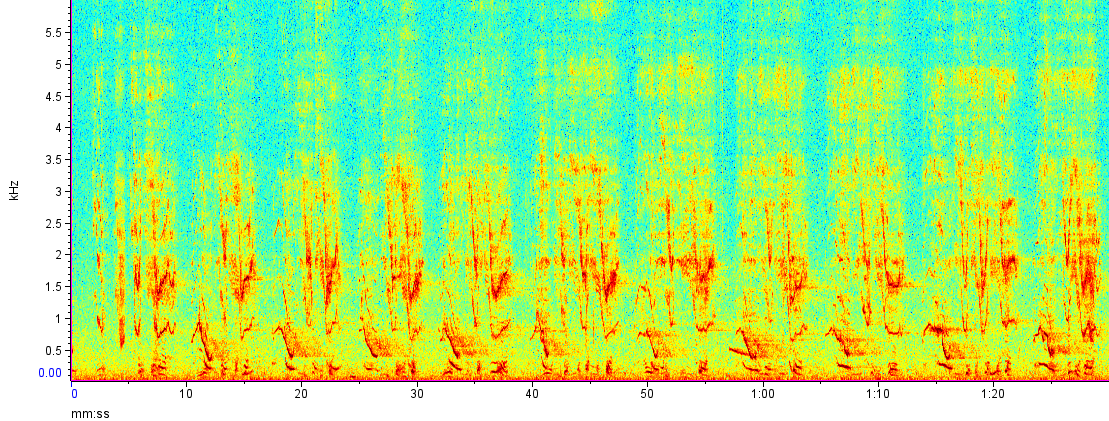
Bioacoustics: A Sound Approach To Arctic Discovery
In the face of increasingly noisy Arctic soundscapes, bioacoustics is emerging as a crucial tool to understand how sound is used, perceived, and impacts the landscape.
“Because the Arctic is harsh, expansive, remote, dark, [and] ice-covered, using acoustic data by listening is one of the best ways we can understand what’s going on, especially in winter,” says Kate Stafford, whose research largely centers on using bioacoustics to analyze marine mammal behavior, migration, and distribution.
Bioacoustics is a broad discipline, encompassing passive acoustic monitoring (PAM), a method that deploys microphones to eavesdrop on the natural environment. Active acoustic monitoring, on the other hand, requires putting sound into the environment to gain information. Much of the work done in the Arctic revolves around passive acoustic monitoring.
Despite being labeled as “passive,” quite a bit of work goes into PAM research. In the Arctic Ocean, hydrophones, or underwater microphones, are attached to an anchor and submerged. These hydrophones record the sounds of the ocean, typically on a “duty cycle” (intervals of recording and non-recording) to preserve the device’s battery life. After the recording period, a research vessel retrieves the hydrophone, now loaded up with acoustic data. Analysis comes next—researchers view, rather than listen to the data, observing the audio in the form of a spectrogram and identifying calls by the patterns they make.
Terrestrial passive acoustic monitoring follows a similar setup, with a few differences, such as unexpected visitors. “Sometimes a bear or a caribou or something else comes by and chews on the equipment or knocks it over,” shares Ziegenhorn. Wind is also a factor on land—microphones need to be set up facing away from the wind, or otherwise the audio could be compromised. Machine learning is becoming an increasingly useful tool in bioacoustic analysis as filters are being created to automatically detect certain vocalizations, though double-checking manually is still necessary. Filters can be region-specific; for example, models exist to solely identify Arctic bird species, an essential tool for work on the Coastal Plain.
So, why are bioacoustics so integral to understanding the Arctic?
“It’s just this new dimension, I think, that gives you a more holistic, complete picture of how that ecosystem is structured and how it’s functioning and what might be causing change,” Brinkman says.
Often, landscapes change acoustically before they appear visually different. Bioacoustics bridge a key gap, acting as an early signifier of ecosystem change. As the Arctic faces increasing development, sound is becoming an important tool for quantifying the impact of anthropogenic activity and understanding the behavioral or spatial changes that occur as a result.
Acoustic monitoring also presents itself as a helpful tool for accurate population counts—especially in areas where snow or extreme weather can inhibit the success of visual counts. In 1977, the International Whaling Commission (IWC) banned the hunting of bowhead whales, a decision detrimental to the livelihoods of the native Iñupiat people of Utqiaġvik, who rely on the spring and fall subsistence whale hunts for survival. The IWC had counted just 1,945 whales, but local elders believed that populations were being underestimated. A population census ensued in Utqiaġvik, and scientist Dr. Craig George played a key role in implementing acoustic monitoring as part of the count. The acoustic data revealed what the elders had known all along: visual methods only accounted for 65% to 73% of all the bowhead whales. Acoustic monitoring revealed the population size to be between 2,652 to 3,004 whales, prompting the IWC to reverse its decision on subsistence hunting.
Stories such as this one reveal just how integral bioacoustic research is for truly understanding our world. When speaking with Todd Brinkman, he recounted a story about soundscape ecologist Bernie Krause, who recorded the acoustics of a forest before and after logging.
“Visually, it didn’t look like the forest had changed too much ... but then the soundscape told a very different story …. Listening indicated that there was intensive change,” Brinkman says. “Just by listening to the landscape, we can learn all sorts of things that we might not otherwise be aware of.”

Listening To The Earth
Alaskan soundscapes have been sounding the alarm for decades. But the good news is, some people are starting to listen.
Several organizations within Alaska have already incorporated acoustic monitoring into their conservation plans, providing a blueprint for future policy. The National Park Service established the Natural Sounds and Night Skies Division to monitor changing soundscapes within its parks. Alaska boasts two substantial programs at Glacier Bay and Denali National parks—the latter even includes “soundscapes” as a critical resource in its backcountry management plan.
In the 1990s, scientists divided an area of Denali into a 20-by-20-kilometer grid, dubbed the Long Term Ecological Monitoring grid. Its job is just that: to track ecological change through acoustic monitoring. Davyd Betchkal, the resident soundscape specialist, works to collect baseline acoustic data and deliver recommendations for reducing anthropogenic sound. In 2007, the Denali Overflights Aircraft Advisory Council, a program focused on reducing the impacts of flight noise—the most common anthropogenic source of sound within the park—was created.
Glacier Bay National Park, located in Southeast Alaska, has also implemented acoustic monitoring to understand the impact of vessels on its underwater soundscapes. The 2014 Voices of Glacier Bay project sought to create a sound library, capturing the park’s diverse acoustic landscape. Projects like this provide an invaluable archive; they are a window into ecosystem change, baseline data for scientists, and engaging educational materials for interpretative programs. Underwater sound monitoring also revealed that synchronizing vessel arrivals within the bay reduces the levels of distress experienced by humpback whales in the region.
Both parks have also engaged in acoustic monitoring for critical migratory bird populations. Since 2012, Glacier Bay researchers have been eavesdropping on migrants to assess whether their migrations are changing temporally. Avian Acoustic Discovery, a project based in Denali, is being used to detect different bird species, specifically with a focus on Alaskan dialects (yes, birds can have accents, too!).
As exemplified by these Interior and Southeast parks, listening to soundscapes provides invaluable insight. But prolonged acoustic monitoring and subsequent scientifically backed policy decisions are largely absent in the Arctic. And with recent executive orders threatening critical northern regions, the need is more urgent than ever.

Policy Pressures On a Fragile Soundscape
If the impending development looming over the Arctic moves forward, soundscapes will be shattered. Approximately 82% of the National Petroleum Reserve–Alaska (NPR-A), a 23-million-acre stretch of land in the Western Arctic, is being considered for oil extraction and drilling. Among a myriad of negatives for the 700,000+ bird species that gather there each summer, natural resource extraction will significantly alter this pristine soundscape, likely disrupting communication and increasing vocal masking. Additionally, more development means increased shipping of materials, negatively impacting the marine soundscape.
Similar effects will follow in two other priority areas affected by federal policies.
Caribou herds, polar bears, and more than 70 bird species face increased anthropogenic noise as 1.5 million acres of the Arctic National Wildlife Refuge Coastal Plain are opened for oil and gas extraction. In the Brooks Range, the development of the 211-mile Ambler Road threatens to slice through natural soundscapes, replacing them with the sounds of construction and mining operations.
If these developments move forward, the grunts of mother polar bears, barking honks of Greater White-Fronted Geese, and rhythmic clicking of migrating caribou may slowly be extinguished.
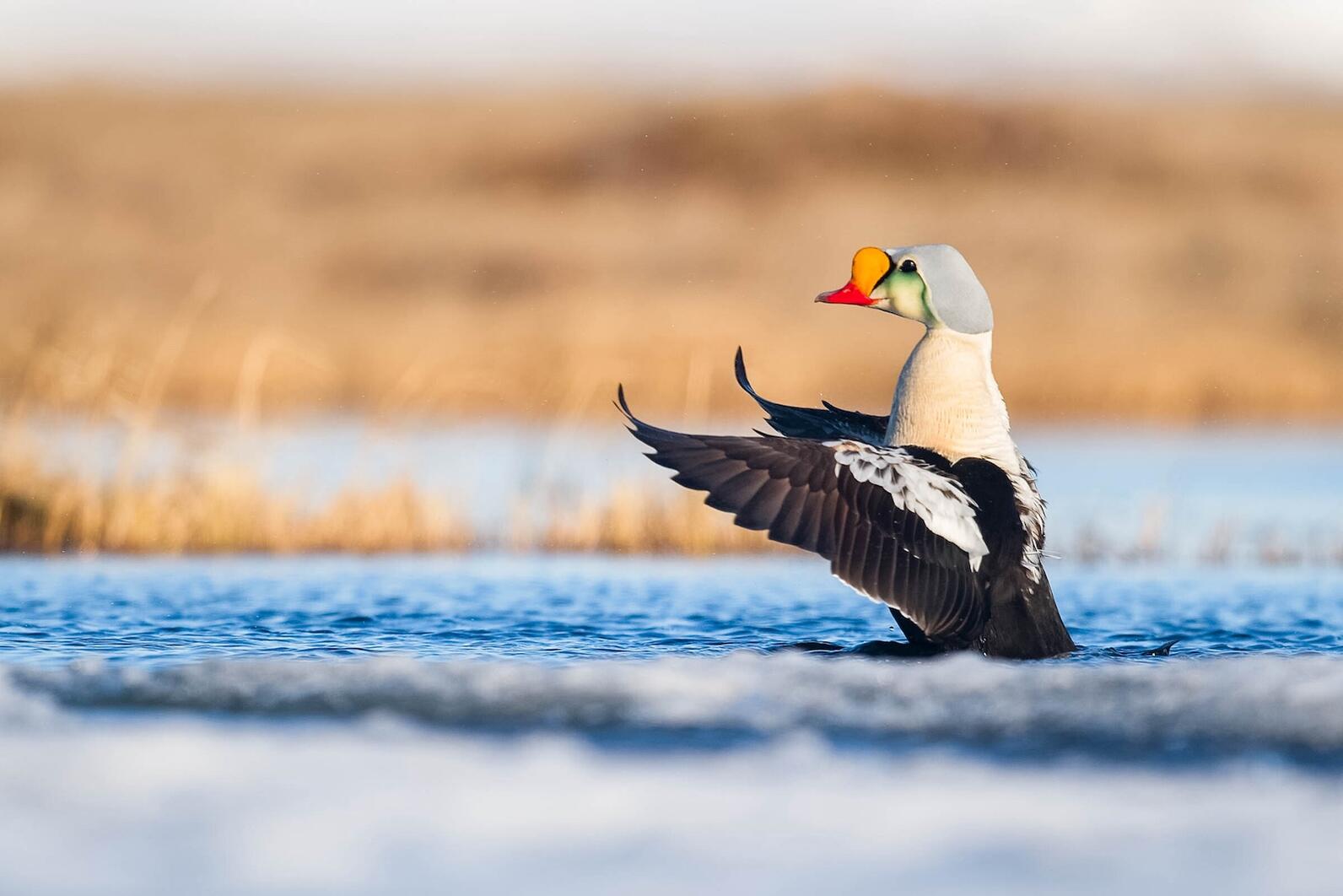
Sounding Out Solutions
Before the voices of the Arctic ecosystem fade to a whisper, policy implementation is essential. Luckily, innovative, acoustics-focused conservation methods have popped up across the globe.
The European Union classified anthropogenic noise as a pollutant, then regulated it accordingly. Cavitation, the noisy implosion of air bubbles by a ship’s propeller, can be reduced through design improvements to the ship’s rotors and hull. Acoustic monitoring is informing habitat conservation decisions for Africa’s critically endangered White-winged Flufftail, offering protection without interference. The National Oceanic and Atmospheric Administration recently invested millions of dollars to develop a near-real-time monitoring program for endangered North Atlantic Right Whales, using passive acoustic monitoring to alert vessels, scientists, and coastal communities when whales are nearby.
Protection is all about dynamic management. Ziegenhorn, who has conducted acoustic monitoring on the Arctic Slope, suggests reducing anthropogenic activities and development during the first few weeks of June, a critical breeding period for migratory birds.
“There has to be give and take to actually get something done, right?” says Stafford, referencing dynamic management in the Bering Strait. While protective measures are critical during the winter as marine mammals migrate through the narrow passageway, regulations are less essential in the summer months as the strait empties of wildlife. “It’s not zero or one, right, or black or white,” she says. There is gray.”
Like all human activity, our sounds leave impacts that can be hard to reverse. But the fight is not over yet. Continued bioacoustic research and conservation-focused policy decisions will be essential to curb the silencing of natural soundscapes.
Stay tuned!
—Grace Miller is Audubon Alaska's Outreach and Communications Advocate.






